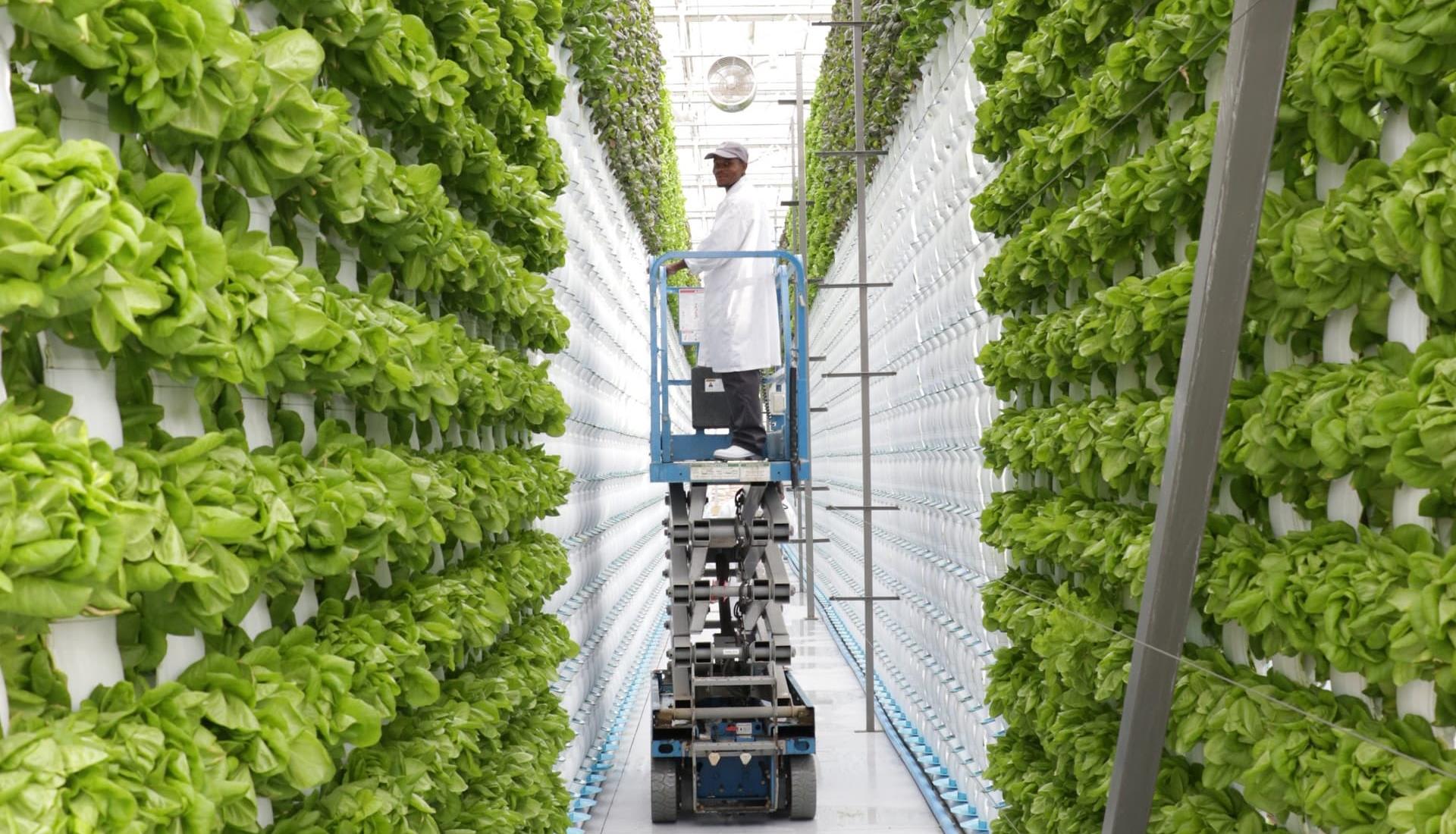| What is vertical farming? |
.jpg)
Just as our homes have evolved to be stacked on top of one another to accommodate a growing population, so too have our farms. Vertical farming, or urban farming, uses controlled-environment agriculture (CEA) technology to regulate factors like temperature, humidity, and light to optimise plant growth. This increases productivity to help meet the growing demand for sustainably sourced food.
Soil trays stacked on shelves with grow lights and hydroponic tower systems in greenhouses using natural sunlight are some of the common methods of vertical farming. But while these methods are considered modern farming innovations, the principles behind vertical farming date back millennia.
The first known example of vertical farming is the Babylonian Hanging Gardens, built around 2,500 years ago. In the 1600s, French and Dutch farmers advanced vertical farming by growing warmer-climate fruits against heat-retaining stone walls, protecting the fruit from the cold nights.
In the modern world, vertical farming has evolved as a critical solution to the looming food security crisis. By growing crops in vertically stacked layers, these farms are able to save a dramatic amount of space, increasing productivity per acre and guaranteeing a more sustainable and reliable food supply in urban areas.
What are the benefits of vertical farming? |
.jpg)
Vertical farming is well-equipped to future-proof our global food supply. Traditional farming relies heavily on large expanses of land, which are becoming increasingly scarce due to urbanisation and climate change. Vertical farming, on the other hand, maximises land use efficiency so that farmers can reliably produce more food without requiring any additional land. Although space-saving is the primary advantage driving the growth and adoption of vertical farming in urban areas, it also offers numerous other benefits:
Benefit |
|
 |
Year-round crop production
|
.jpg) |
Water conservation
|
 |
Higher yield and faster growth
|
 |
Reduced chemical output
|
 |
Local production
|
How does vertical farming work? |

By stacking crops vertically instead of horizontally, vertical farming aims to save space without foregoing productivity. Vertical farming is mostly undertaken indoors as it doesn’t rely on soil, as demonstrated by Australian agritech startup InvertiGro which partnered with Woolworths to deliver Australia’s first in-store vertical farms.
Vertical farming systems use hydroponics, aeroponics or aquaponics to grow plants indoors. Hydroponic systems are the most common, and use a water solution to deliver essential nutrients directly to the root system, which grows inside a medium such as rockwool, expanded clay or hemp fibres. Aeroponics is a variation of hydroponics that involves spraying the roots with air or mist, while aquaponics reuses water that fish have been swimming in to feed the plants.
But what exactly do vertical farms look like? Demand for vertical farming systems is growing, and so too is the range of vertical farm shapes and sizes, from two-level systems in patio gardens to tall, automated systems in warehouses or greenhouses with multiple tiers.
 |
Tower systemsTower systems use stacked columns to grow plants vertically, maximising space and ensuring optimal plant growth. They offer high yields per square foot, but require careful management to be economically viable. |
 |
Rack systemRack systems grow crops on vertically stacked shelves or racks and often rely on artificial lighting and climate control systems for the plants to grow. 26 Seasons is a vertical farming company using a rack system to grow strawberries year-round. |
 |
A-Frame systemsA-frame systems use triangular frameworks to support vertical crop growth. Watering and nutrient management systems are integrated into the design and the space saving structure is well suited to urban areas and commercial settings. |
Wall-mounted systemsWall-mounted systems, or living walls, grow plants on vertical surfaces, making efficient use of space. They are ideal for urban settings and architectural integration and great for herbs, fruits and leafy greens. |
|
 |
Hybrid systemsHybrid systems combine various vertical farming techniques to optimise space and diversify crops. However, these systems can sometimes face challenges in their complexity and costly management. Vertical farming companies like InvertiGro offer innovative hybrid systems that can be tailored for different purposes. |
As demand for urban farming grows, so too does the innovation and research to bring new technologies to market. A new modular channel system has been developed by Gaia Project Australia (GPA), which optimises space and power resource requirements to double plant yield when compared to other controlled-environment agriculture (CEA) methods.
What are the challenges of vertical farming? |
High Energy Consumption
Vertical farming systems rely on artificial lighting and 24-hour climate control technologies to maintain optimal growing conditions. While this ensures year-round crop production, it leads to high energy costs, making energy efficiency a key challenge. However, ongoing advancements in LED lighting, solar power, and other renewable energy solutions are helping to reduce electricity consumption and improve the sustainability of vertical agriculture.
Initial Capital Investment
The infrastructure needed for vertical farming systems, including hydroponic or aeroponic setups, climate-controlled environments, and automation technology, requires significant upfront investment. This can be a barrier to entry for new businesses. However, as technology advances and economies of scale improve, setup costs are gradually decreasing, making vertical farming a more viable option for long-term agricultural solutions.
Technical Expertise
Unlike traditional farming, which often relies on intergenerational knowledge of soil-based agriculture, vertical farming requires specialised technical expertise in areas such as controlled-environment agriculture, hydroponics, aeroponics, lighting systems, and automation. Vertical farm operators must understand how to balance nutrients, monitor plant health, and optimise growing conditions. As the industry grows, educational programs and training initiatives are helping to bridge this knowledge gap.
Adoption
The widespread adoption of vertical farming depends on its economic viability, accessibility, and scalability. High operational costs and the need for specialised technology can limit widespread implementation, but continued advancements in agtech and market support for local, chemical-free produce is helping toward making vertical farming a mainstream agricultural practice.
Growing Up: How Vertical Farming Works